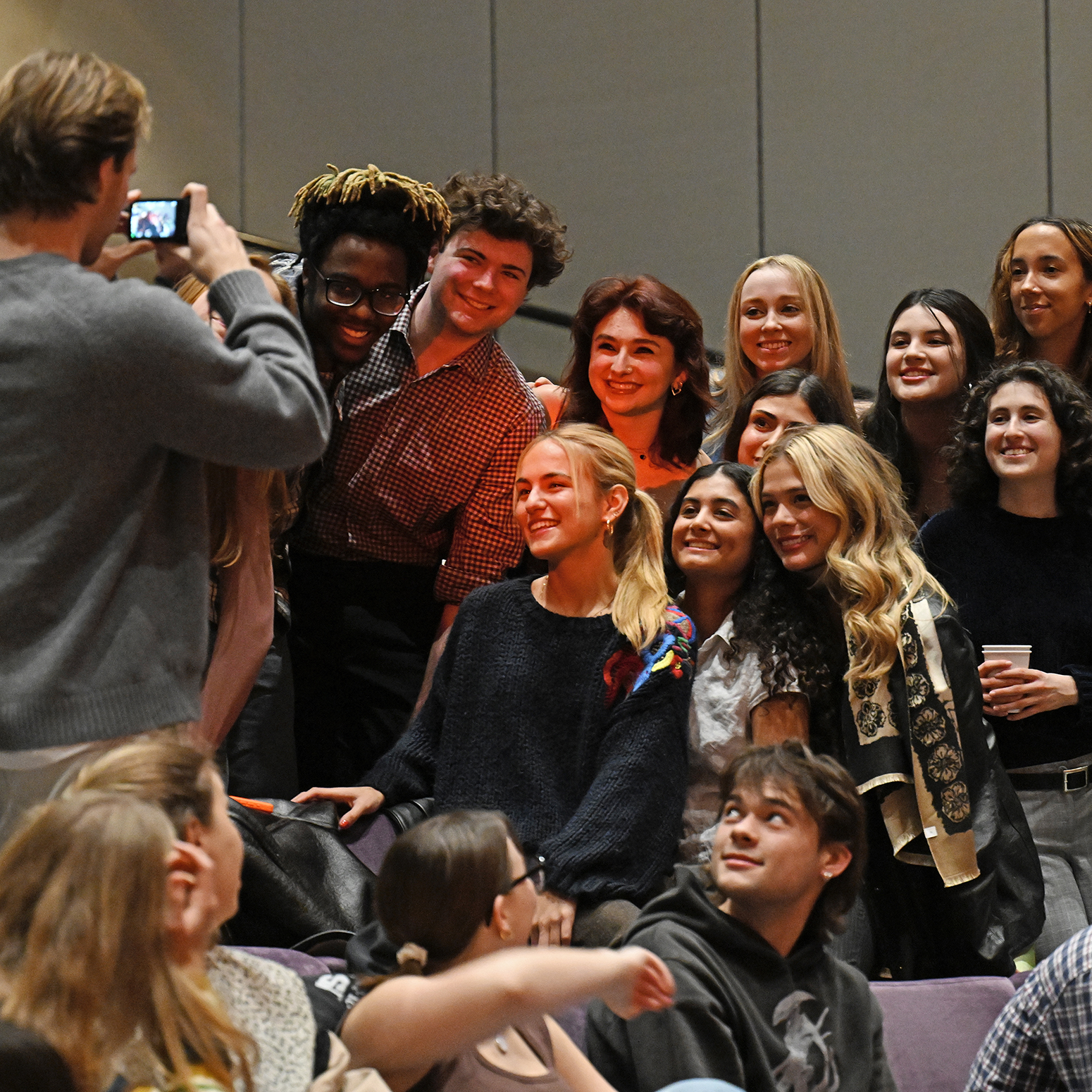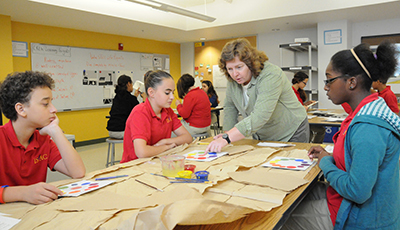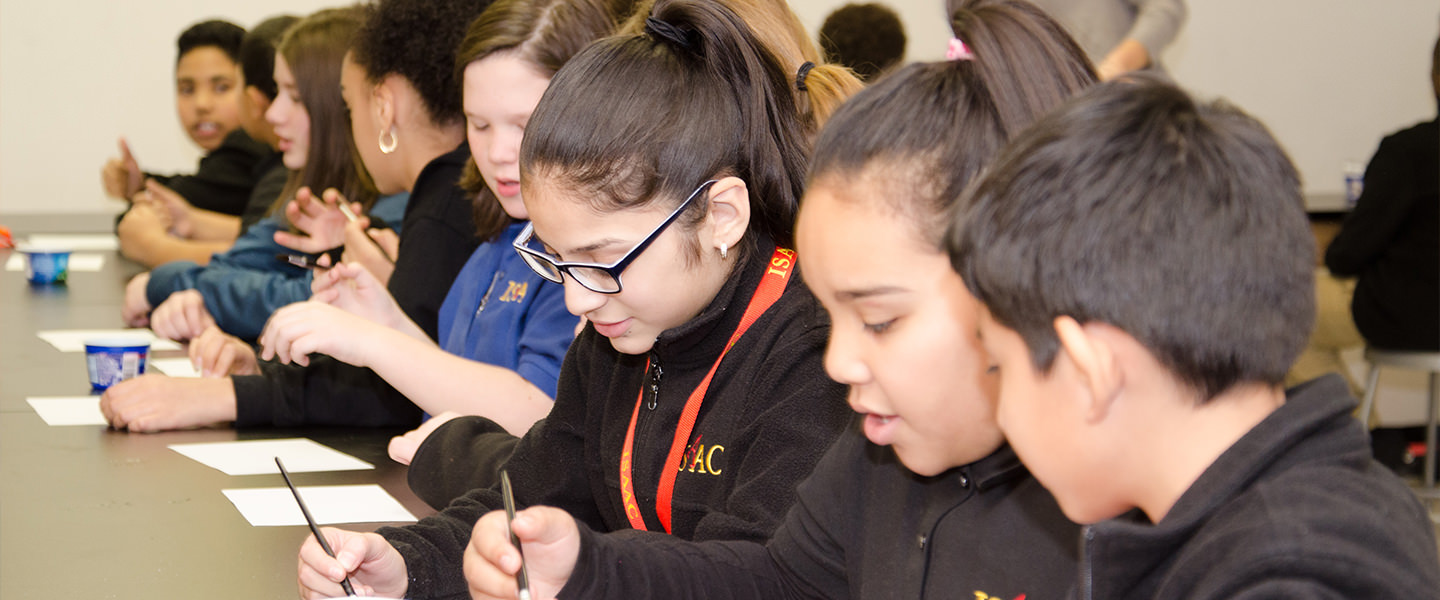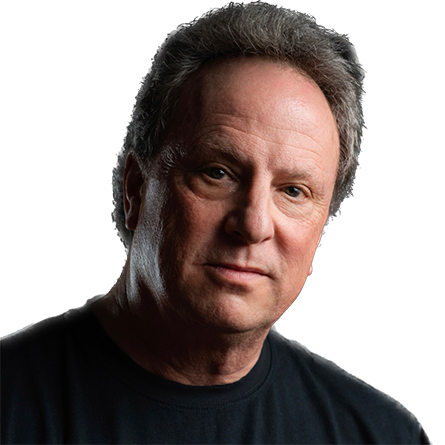
Difference-makers
At New London’s ISAAC school, David Howes ’93 M’00 is implementing a new model for teaching and learning.
Standing in the bright hallway on the second floor of New London’s Interdistrict School for Arts and Communication, seventh-graders Destiny and Morgan are eager to talk about their social studies assignment: Design a fictional school in Pakistan.
“We have to calculate the cost of supplies, create a startup plan and decide if it’s going to be public or private,” says Morgan.
“And it has to be safe,” Destiny adds definitively.
David Howes ’93 M’00 listens intently to the students. As principal and executive director of one of the first charter schools in Connecticut, he has learned a thing or two about running a successful school.
Howes, who studied history as an undergraduate at Connecticut College and later earned his master’s in education, was an early adopter of “Expeditionary Learning,” a school reform model and network of schools around the country that encourages students to take ownership of their own learning and explore issues within their communities.
To better understand the Syrian refugee crisis, for example, students visited with refugees at the Integrated Refugee and Immigrant Services Center in New Haven. They launched a drive to collect towels and sheets for refugees, and, in art class, they drew portraits of refugees to put a human face on the crisis.
ISAAC is one of only a few schools in the state that has adopted the Expeditionary Learning model (now called EL Education), and the only school outside of Hartford and New Haven.
“Our students do high-quality work that has an authentic purpose,” Howes says. “Good learning happens when kids are doing work that matters.”
Now celebrating its 20th year, ISAAC was born from a community initiative led by parents of elementary students attending New London’s Regional Multicultural Magnet School. The group, which also included faculty from Connecticut College, was granted a charter from the state in 1996 to create a community middle school that would integrate art, music and multicultural education.
As an independent public charter school, ISAAC receives its funding directly from the state. ISAAC has autonomy over the curriculum and operations to make decisions its educators believe are best for kids, while still being accountable to rigorous state requirements. That means the school can innovate with educational programs.
“We had a very progressive model at the beginning. The curriculum was actually designed by the kids,” says Howes, who served as a substitute teacher (while working as an assistant lacrosse coach at Conn) during ISAAC’s first year.
When it originally opened with just 45 students, the school took up only one floor of rented space at the Shiloh Baptist Church community center. Today, the school enrolls 270 and spans all four floors of a historic building in the heart of downtown New London that was once a YMCA. The classrooms are quirky and charming—one sixth-grade math room features an oversized fireplace with a massive marble mantel, for example. Student artwork lines the hallways and the stairwell has a large art installation hanging from the ceiling. Color is everywhere; the goal is to make the space feel less institutional than most modern schools.
“Less institutional” could also describe the curriculum. ISAAC opened just a few years before the passage of No Child Left Behind ushered in an era of high-stakes testing that led many public schools to focus more heavily on a few select subjects. At ISAAC, character development and learning habits are stressed as much as mastery of knowledge and skills, and students spend several hours a day in art and technology instruction.
“Character, quality and connection were lost as the focus was only on ‘test subjects’—literature and math,” says Howes, who taught at ISAAC for 13 years before making the jump to administrator.
“Educators are starting to realize that art and music are not extra things, but essential to learning. Art and technology can be change agents for kids.”
Project-based learning, which requires students to work on projects related to issues in their own communities, is a celebrated approach among educators, including Associate Professor of Education Lauren Anderson.
On a recent visit to ISAAC, Anderson was impressed by students in a music and technology class who were creating their own podcasts.
“With project-based learning, students are not just consuming information, they are producing things and they are doing it in creative ways,” she says. “It’s a robust way to engage kids in the learning process around issues that have meaning in the immediate communities but also a broader reach.”

Rochelle Duyan ’02 says she has seen the benefits firsthand with her daughter Alexis, a seventh-grader at the school.
“She read A Long Walk to Water about the Sudan water crisis, and her class did a unit on Fair Trade chocolate,” Duyan says. “Now she’s checking all the labels in the house. She’s asking questions that I don’t think she would be asking if she weren’t a student here.”
ISAAC is one of several local schools where Conn students pursuing teacher certification can complete internships and serve as student teachers. Mike Kuczenski ’09 served as a student teacher under Howes, for example, and is now a full-time social studies teacher at ISAAC.
Howes says he is excited about the potential for more partnerships between ISAAC and Conn in the future, and he is proud to have two former ISAAC students—Jamison Hermann ’11 and Kolton Harris ’14—go on to graduate from the College.
“Our model has staying power, and the evidence is students like Kolton and Jamison who have had the opportunity to become difference-makers.”

